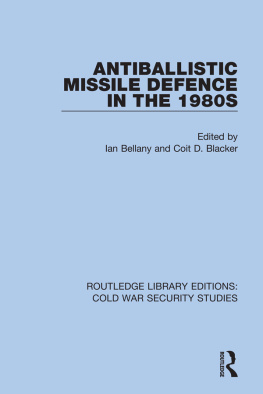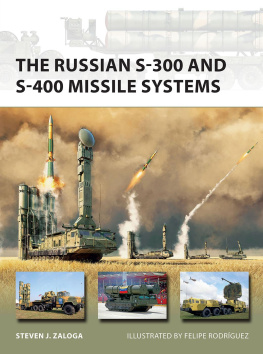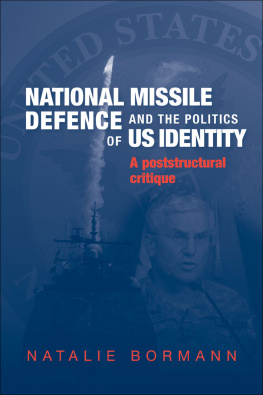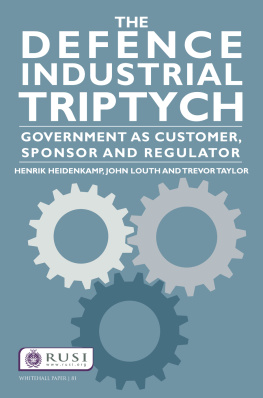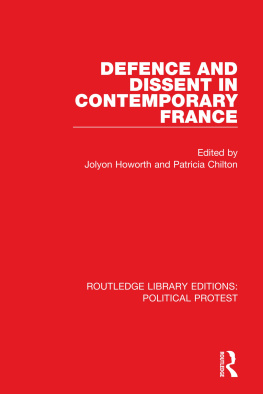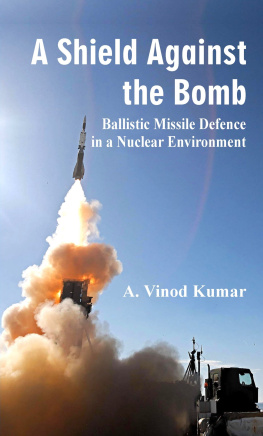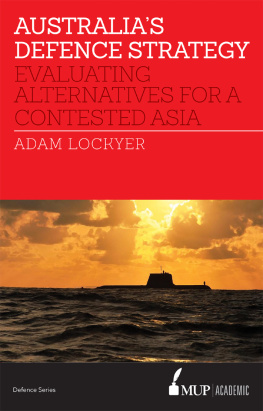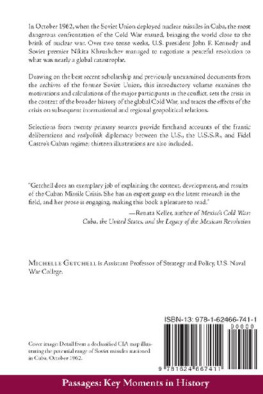ROUTLEDGE LIBRARY EDITIONS: COLD WAR SECURITY STUDIES
Volume 2
ANTIBALLISTIC MISSILE DEFENCE IN THE 1980s
First published in 1983 by Frank Cass & Co. Ltd.
This edition first published in 2021
by Routledge
2 Park Square, Milton Park, Abingdon, Oxon OX14 4RN
and by Routledge
52 Vanderbilt Avenue, New York, NY 10017
Routledge is an imprint of the Taylor & Francis Group, an informa business
1983 Frank Cass & Co. Ltd.
All rights reserved. No part of this book may be reprinted or reproduced or utilised in any form or by any electronic, mechanical, or other means, now known or hereafter invented, including photocopying and recording, or in any information storage or retrieval system, without permission in writing from the publishers.
Trademark notice: Product or corporate names may be trademarks or registered trademarks, and are used only for identification and explanation without intent to infringe.
British Library Cataloguing in Publication Data
A catalogue record for this book is available from the British Library
ISBN: 978-0-367-56630-2 (Set)
ISBN: 978-1-00-312438-2 (Set) (ebk)
ISBN: 978-0-367-56587-9 (Volume 2) (hbk)
ISBN: 978-1-00-309852-2 (Volume 2) (ebk)
Publishers Note
The publisher has gone to great lengths to ensure the quality of this reprint but points out that some imperfections in the original copies may be apparent.
Disclaimer
The publisher has made every effort to trace copyright holders and would welcome correspondence from those they have been unable to trace.
Antiballistic Missile Defence in the 1980s
Edited by
Ian Bellany
University of Lancaster
and
Coit D. Blacker
Stanford University
First published 1983 in Great Britain by
FRANK CASS AND COMPANY LIMITED
Gainsborough House, 11 Gainsborough Road,
London, Ell IRS, England
and in the United States of America by
FRANK CASS AND COMPANY LIMITED c/o Biblio Distribution Centre
81 Adams Drive, P.O. Box 327, Totowa, N.J. 07511
Copyright 1983 Frank Cass & Co. Ltd.
British Library Cataloguing in Publication Data
Antiballistic missile defence in the 1980s.(Arms control
ISSN 0144-0381. Vol. 3; no. 2)
1. Antimissile missilesHistory
I. Bellany, IanII. Blacker, Coit D.
III. Series
355.0308UG1312.A6
ISBN 0-7146-3207-4
This group of studies first appeared in a Special Issue on Antiballistic Missile Defence in the 1980s of Arms Control, Vol. 3, No. 2, published by Frank Cass & Co. Ltd.
All rights reserved. No part of this publication may be reproduced, stored in a retrieval system, or transmitted in any form, or by any means, electronic, mechanical, photocopying, recording, or otherwise, without the prior permission of Frank Cass and Company Limited.
Printed in Great Britain by
T. J. Press (Padstow) Ltd., Padstow
Contents
Introduction
H. O. News ham
Critical Decision Areas in the BMD Arms Control Debate Jack L. Kangas
Arms Control Implications of Ballistic Missile Defense Robert C. Gray
The ABM and American Domestic Politics Phil Williams and Stephen Kirby
Europe and the ABM Revival Lawrence Freedman
Extended Deterrence and the Protection of the United States ICBM Force Ian Bellany
- Introduction
- Critical Decision Areas in the BMD Arms Control Debate
- Arms Control Implications of Ballistic Missile Defense
- The ABM and American Domestic Politics
- Europe and the ABM Revival
- Extended Deterrence and the Protection of the United States ICBM Force
Ian Bellany is Professor and Director of CSACIS at the University of Lancaster. The author of Australia in the Nuclear Age and a large number of articles on defence and disarmament issues, he is currently engaged on theoretical studies in arms control.
Coit D. Blacker, the American editor of Arms Control is Associate Director of the Arms Control and Disarmament Program at Stanford University, where he also teaches in the Political Science Department. A Council on Foreign Relations International Affairs Fellow during academic year 1981/82, Dr Blacker has just completed a twelve month tour of duty in the office of Senator Gary Hart, where he served as special assistant for national security issues.
Lawrence Freedman is Professor and Head of the Department of War Studies at Kings College, London. Prior to April 1982 he was Head of Policy Studies at the Royal Institute of International Affairs. In addition to many articles on defence and foreign policy Professor Freedman is the author of U.S. Intelligence and the Soviet Strategic Threat, Britain and Nuclear Weapons and The Evolution of Nuclear Strategy.
Robert C. Gray is Associate Professor of Government at Franklin and Marshall College. In 1979-80 he was a Council on Foreign Relations Fellow, serving in Washington as a policy analyst in the office of the Secretary of Defense. He is currently conducting research on U.S. nuclear strategy.
Jack Kangas studied defence policy at M.I.T. and Stanford University. He was with the office of the Secretary of Defense from 1971 to 1978 and is now a consultant with the Washington Defense Research Group Inc.
Stephen Kirby lectures in Politics at the Unversity of Hull and during academic year 1982/83 is visiting professor at the University of Tours. He has published articles on British and American defence policies and defence budgeting and is co-author (with Andrew Cox) of Defence Budgeting in Britain and America to be published in early 1983.
H. O. Newsham is a pseudonym.
Phil Williams is a lecturer in International Relations in the Department of Politics, University of Southampton. He is currently a Research Fellow at the Royal Institute of International Affairs where he is engaged on a project in Atlantic relations. He is author of Crisis Management, a co-author of Contemporary Strategy, and is currently completing for publication a book entitled The Senate and U.S. Troops in Europe.
Just over ten years ago, in Moscow, the United States and the Soviet Union signed what has come to be regarded as the most important and enduring arms control agreement ever concluded by the two super-powers-the anti-ballistic missile treaty of May 1972. The treaty is of unlimited duration, although subject to formal review by the signatories every five years. The first such review, in 1977, passed without significant incident. The second review, which has yet to take place, promises to be rather more eventful.
In contrast to its immediate predecessor, the Reagan administration has made clear its determination to explore, carefully and aggressively, the technical possibilities for, as well as the political and military implications of, a U.S. ballistic missile defense system (BMD). Indicative of its strong interest in this regard, the administration requested over $700 million for BMD-related research and development in its fiscal year 1983 budget. The Congress, unconvinced by the logic of the administrations case and eager to find ways to trim the defense budget, reduced the Reagan request this summer by almost one half, authorizing roughly $100 million more than had been appropriated the year before. The administration, which seems not to have anticipated the hostile congressional response, has already signalled its intention to submit a new BMD funding request during the FY 1984 budget cycle that could exceed $ one billion. In short, the debate within the American policymaking community over the advisability of accelerating BMD programs, far from being over, is, in reality, about to begin. Moreover, the administrations stake in the outcome of the debate is quite highit is extremely difficult to imagine any militarily viable permanent basing plan for the troubled MX missile that will not require at least a limited anti-ballistic (ABM) deployment.


